Kia is entering the commercial vehicle business with the PV5. It unveiled the new fully electric LCV at the 2025 Kia EV Day in Spain this week, along with two versions of the Kia EV4 and a compact crossover concept called the EV2.
The PV5 is the first of a series of van-based models as part of the company’s Platform Beyond Vehicle (PBV) global strategy. These production versions, which bear a close resemblance to the original design concepts showcased at the 2024 Consumer Electronics Show, will hit the road for the first time later this year.
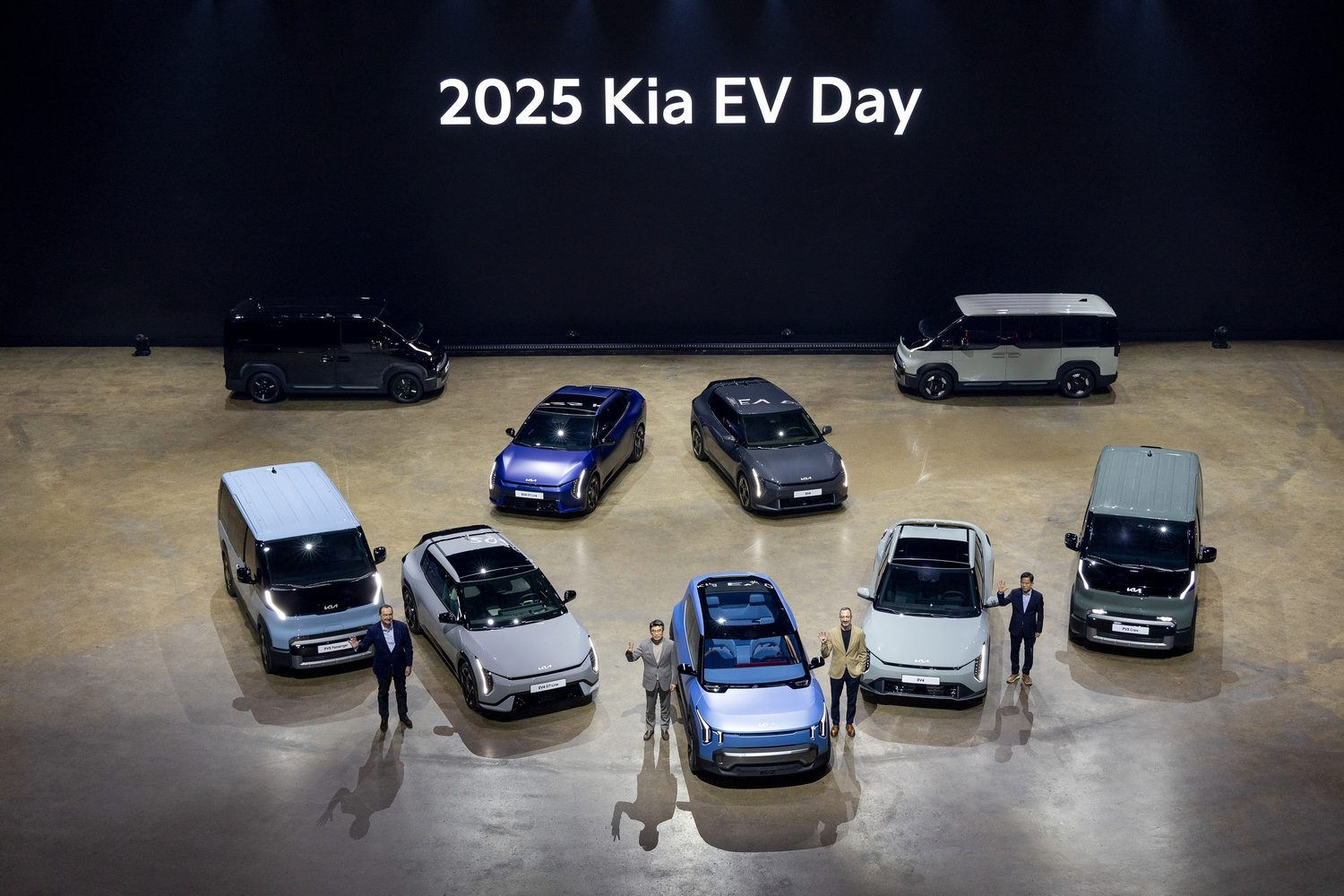
Kia has tailored its ‘E-GMP.S’ platform to support multiple vehicle applications for a range of LCVs, including cargo vans, crew cabs, chassis cabs, passenger versions and even a light camper. Furthermore, Kia’s President and CEO, Ho Sung Song, outlined plans for larger PV7 and PV9 vans.
“By integrating the clean efficiency of an electric powertrain with the unprecedented flexibility of our new PBV architecture and advancing our product, software, and manufacturing innovations, the PV5 embodies our core values as a company.
“Modern vehicles have become incredibly complex, but with the PV5, Kia has united multiple cutting-edge technologies toward the goal of simplifying users’ mobility experiences. This removes complexity from their personal transport needs and frees them to focus on the pursuit of their ambitions and fulfilment of their passions,” he added.
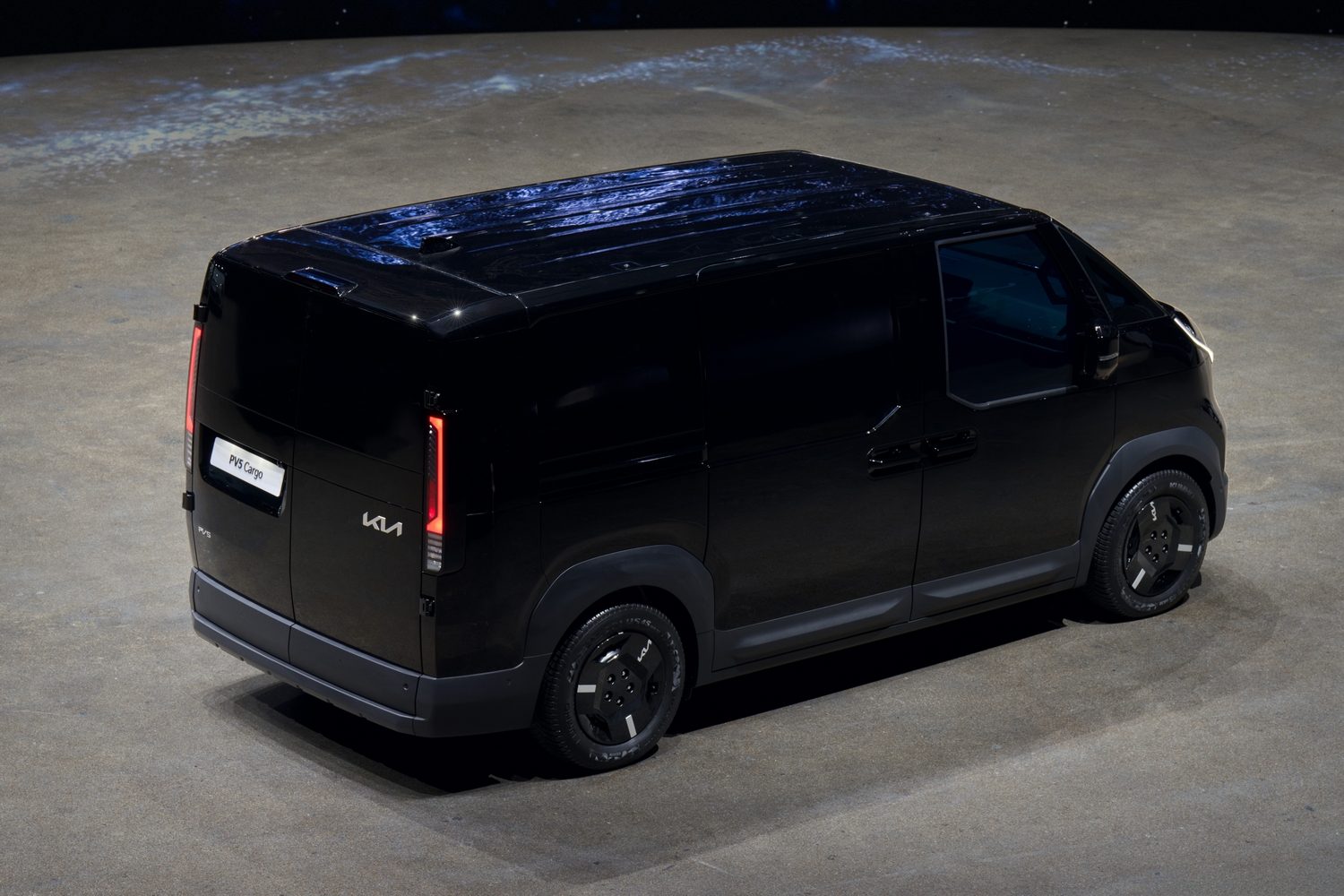
Multiple powertrain options for the Kia PV5
There will be three different battery sizes available for the PV5. The smallest of these is a 43.3kWh LFP unit that will exclusively be used in the PV5 Cargo, targeting light duty and last-mile delivery operators.
All other versions, including the PV5 Cargo, will be available with the choice of 51.5kWh or 71.2kWh NCM battery packs. Depending on specifications, driving ranges will be up to 400 kilometres. The platform’s 400-volt architecture enables DC fast-charging from 10 to 80 per cent in 30 minutes. Regardless of battery size, all versions of the PV5 will be powered by a 120kW motor driving the front wheels, producing up to 163hp.
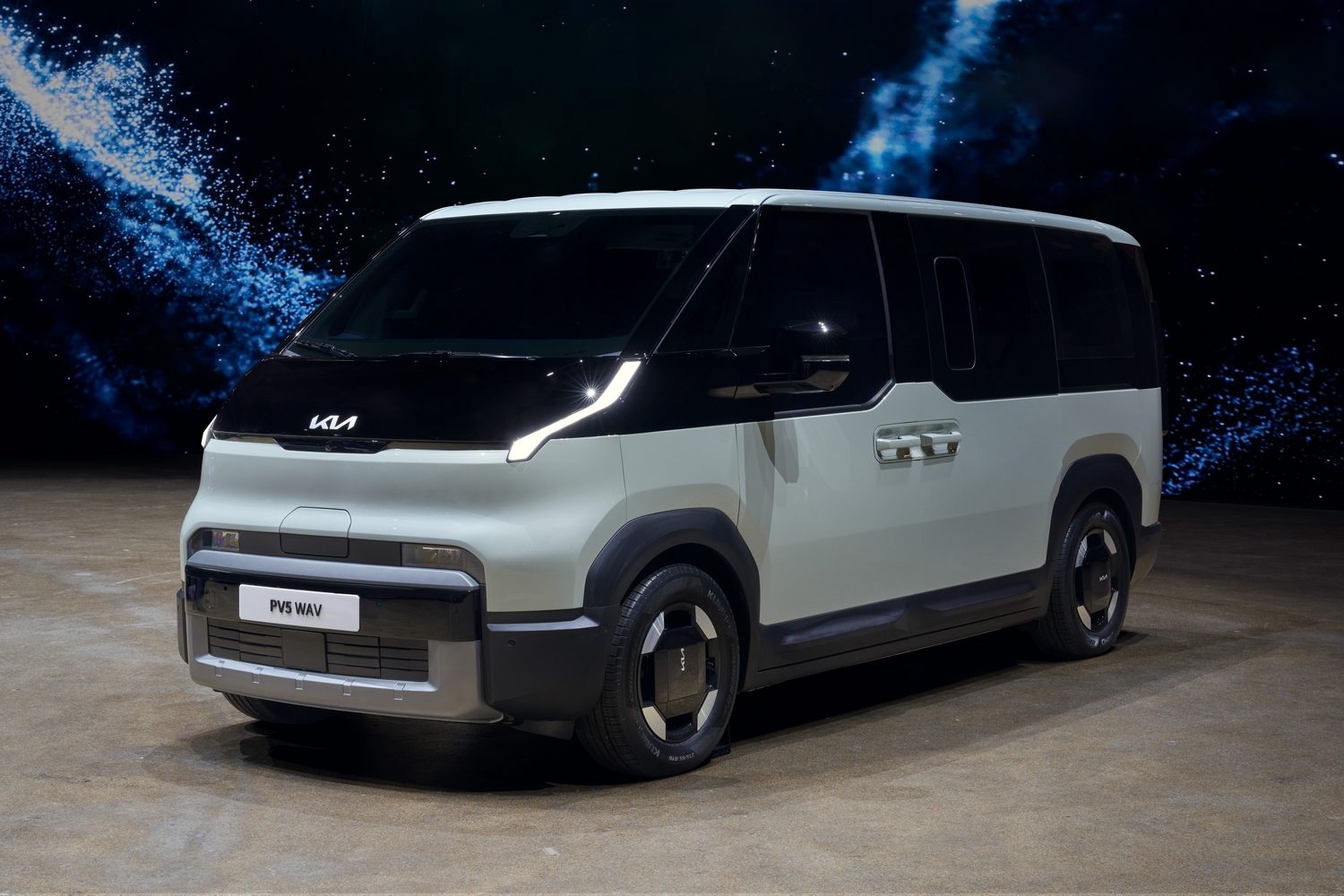
There is a Kia PV5 Passenger model
The PV5 Passenger shows a different side to the electric van and puts it into contention as a competitor to other battery-powered MPVs such as the Ford e-Transit, Mercedes-Benz EQV and e-Vito Tourer, Opel Zafira Life, Volkswagen ID. Buzz and e-Caravelle. Surprisingly, the PV5 Passenger was shown only as a five-seater with a 2-3-0 configuration, but it’s expected there will be others.

The second row provides ample legroom and headroom, with two ISOFIX mounting points and the option of electrically operated sliding rear doors. The lift-up tailgate can also be electrically operated, while the low load height and voluminous cargo area make it a very practical vehicle. The introduction of a third row of seating would make the PV5 an attractive option for taxi drivers, especially given the current government grants available for such vehicles.
With that in mind, Kia also presented a PV5 Wheelchair Accessible Vehicle (WAV) designed and built in the factory to provide the necessary equipment for easy ingress and egress of passengers. Traditionally, this conversion is done by a third party after production, so Kia is cutting out one step of the process by offering it from the factory. The ramp is capable of supporting 300 kilograms and is manually opened from the PV5’s floor, providing kerbside access. The rear seat bench can also fold upwards to provide more room inside. New electric taxis that are wheelchair accessible can avail of up to €25,000 in government grants in Ireland.
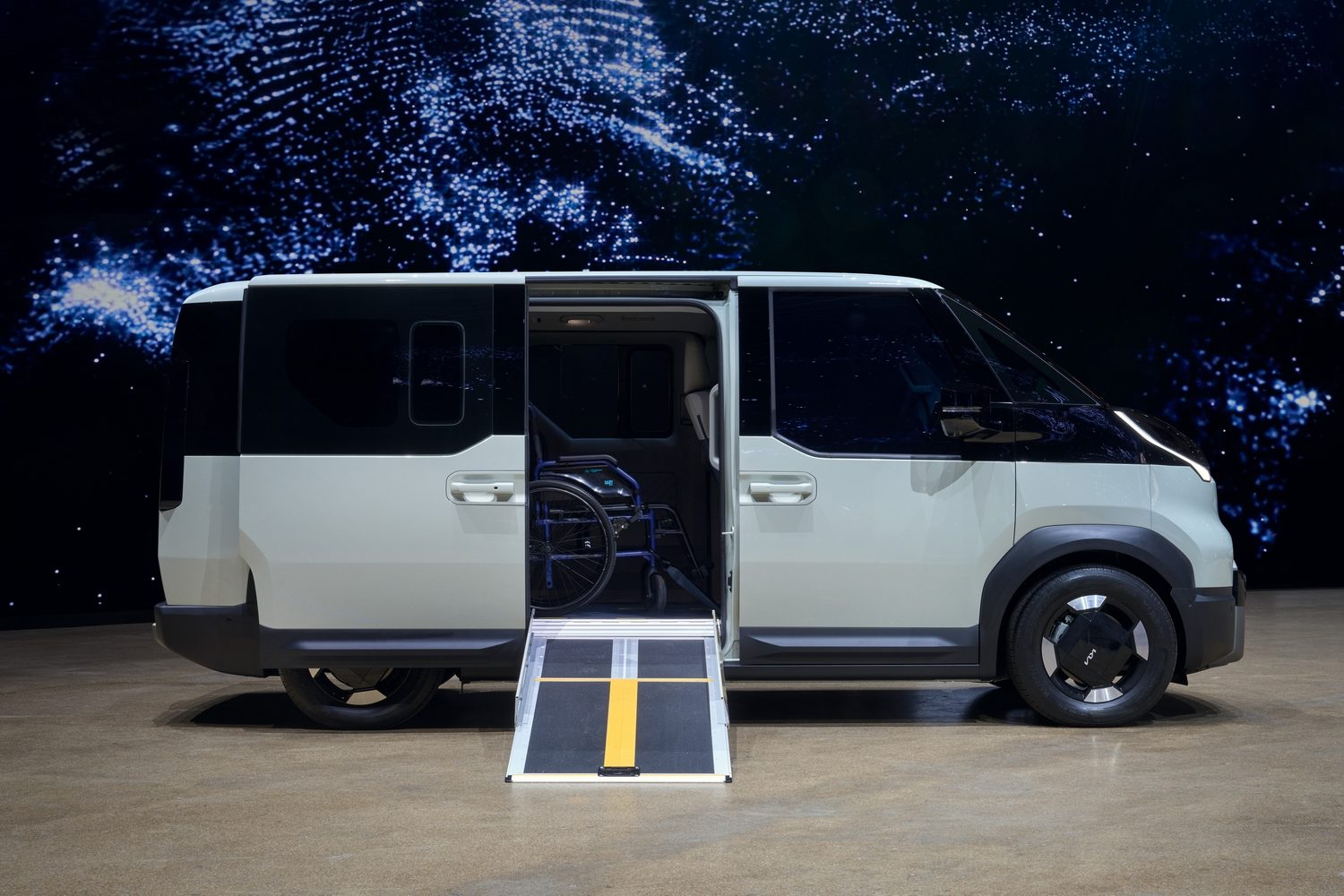
What sort of tech is inside the Kia PV5?
All versions of the Kia PV5 come equipped with a seven-inch instrument display and a 12.9-inch touchscreen. The latter runs the Android Automotive OS-based infotainment system that includes a developing app market. Business users will be able to download and install third-party software apps via the touchscreen, including ride-sharing systems or even taxi meters in markets that permit such items.
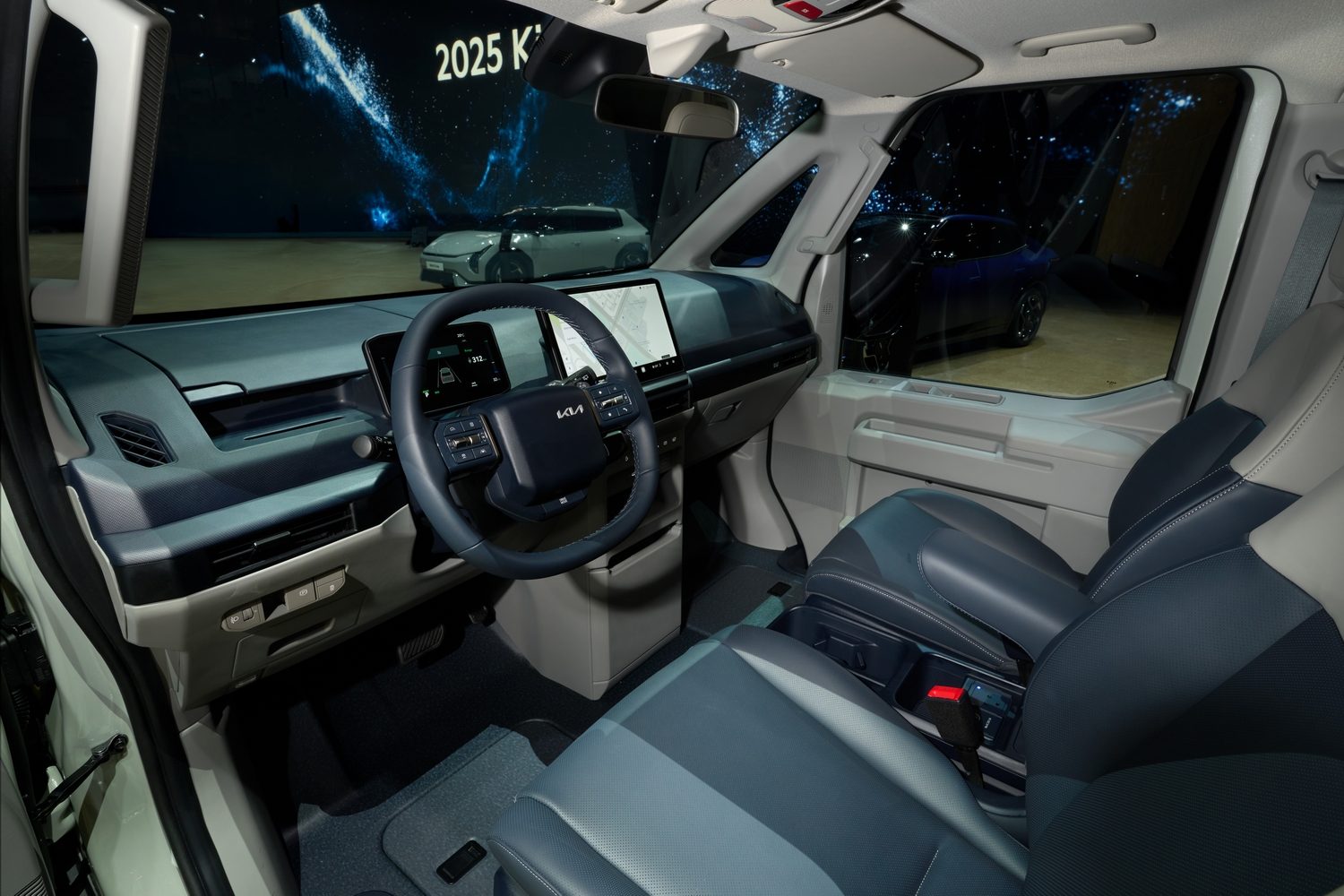
The onboard software will be capable of over-the-air updates for the vehicle’s power electronics, battery management systems and other aspects. Users can operate the PV5 via digital key technology, including NFC.
How big is the Kia PV5?
The plan for the Kia PV5 Cargo van is to offer the option of two wheelbase lengths and two roof heights, but thus far, only one body shape has been confirmed for the PV5 Passenger. The dimensions for the Kia PV5 Cargo Long are:
Length: 4,695mm
Width: 1,895mm
Height: 1,905mm
Wheelbase: 2,995mm
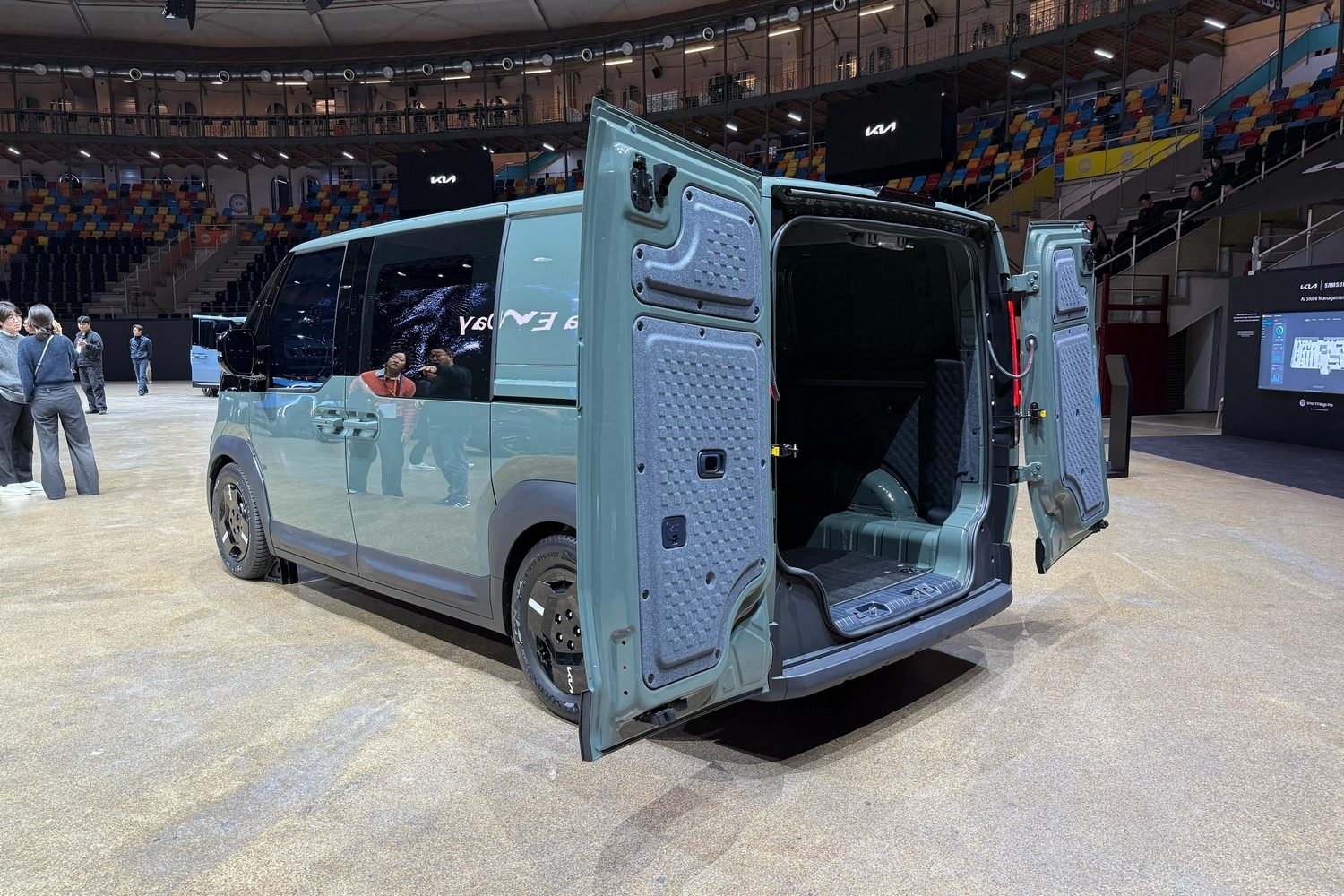
It’s expected that the Kia PV5 range will arrive in Ireland next year, but Irish pricing has yet to be confirmed.


































